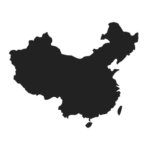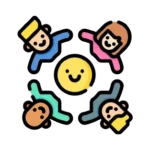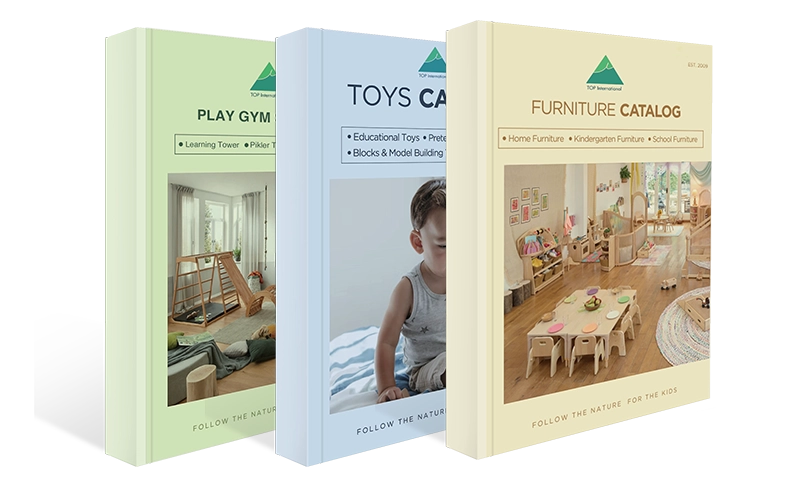How do we truly understand what children need? Are we missing key developmental signs in our classrooms? Can Childhood Observation help us respond better to their behavior and emotions? What are the most effective ways to observe children without interrupting their natural rhythm?
Childhood Observation is a powerful method for understanding children’s thoughts, needs, and developmental progress. By observing naturally and systematically, educators can tailor support based on real behaviors. This leads to improved learning outcomes, emotional security, and stronger teacher-child connections. Practical observation helps us notice learning styles, social interactions, and potential concerns early.
Mastering Childhood Observation takes more than just watching—it requires the proper techniques, timing, and mindset. In the sections below, I’ll share practical, proven strategies that can help any educator or parent become a more mindful and insightful observer of children.
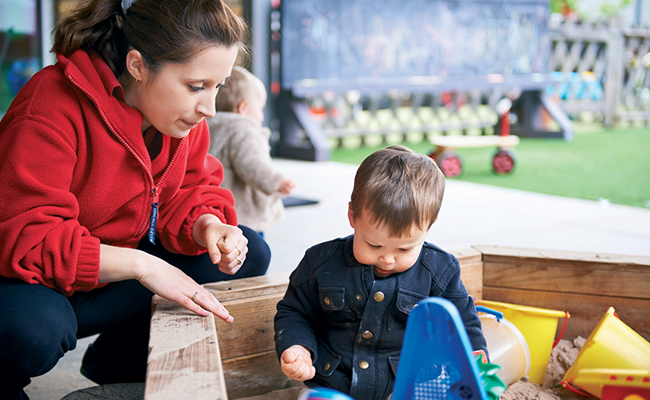

การสังเกตในวัยเด็กคืออะไร?
Childhood Observation is the intentional act of watching, listening, and documenting a child’s behavior, emotions, and interactions in their natural environment. Rather than intervening or directing the child, the adult becomes a quiet observer, learning from the way the child explores the world, plays, solves problems, and interacts with others.
Through ongoing Childhood Observation, parents, teachers, and caregivers gain insights into a child’s development in real time. It reveals not only what a child knows, but also how they learn, how they handle frustration, and how they express joy, curiosity, or empathy. These observations help adults adjust their teaching methods, environment, or support strategies to meet the child’s individual needs.
There are several methods of Childhood Observation, ranging from anecdotal notes to more structured tools like checklists, time sampling, and running records. Each technique serves a different purpose, but they all aim to capture authentic behavior without disrupting the child’s experience.
This kind of observation isn’t just about seeing what a child does—it’s about understanding why. For example, a teacher might notice that a child consistently avoids group activities. Rather than labeling the child as shy, thoughtful observation may reveal a need for more structure or support in social situations.
Observation also supports a more respectful, child-centered approach to teaching. Instead of relying solely on standardized assessments, teachers base decisions on real-life behaviors and daily interactions. This helps create classrooms that are more responsive and emotionally supportive.
In short, learning to observe well is a skill that takes time and practice, but it’s worth it. By quietly watching and thoughtfully reflecting, we begin to see each child as a unique individual on their journey of growth.
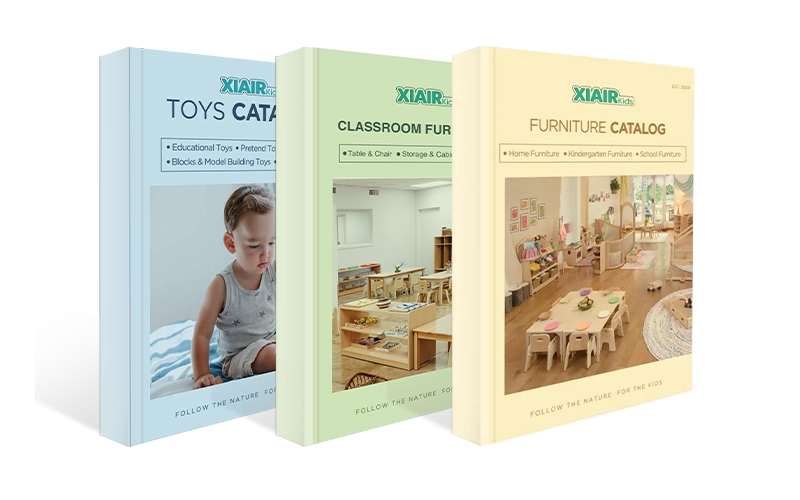
Receive a free catalog and custom layout to help you design your ideal classroom easily.
เหตุใดการสังเกตจึงมีความสำคัญในวัยเด็ก?
Observation is a cornerstone of effective teaching in early childhood education. It provides educators with critical insights into a child’s development, helping them to understand how children learn, interact, and engage with their environment.
ความสำคัญของการสังเกตในการศึกษาปฐมวัยนั้นไม่ได้จำกัดอยู่แค่การติดตามพฤติกรรมเท่านั้น แต่ยังมีบทบาทสำคัญในการชี้นำกระบวนการเรียนรู้ด้วย นักการศึกษาสามารถติดตามความก้าวหน้าของเด็กๆ ในด้านพัฒนาการต่างๆ เช่น การเรียนรู้ภาษา ทักษะทางสังคม ความสามารถทางปัญญา และการควบคุมอารมณ์ การสังเกตเหล่านี้ช่วยให้ครูสามารถระบุจุดแข็งและความท้าทายในการเรียนรู้ที่อาจเกิดขึ้นของเด็กได้ ทำให้ครูสามารถสร้างประสบการณ์การเรียนรู้ส่วนบุคคลที่ปรับให้เหมาะกับความต้องการของแต่ละบุคคลได้
A few other potential actions and outcomes for childhood observation include:
- Better understanding of the child’s communication style
- Identify signs of behavioral challenges or special needs
- Document the child’s language development
- Record how the child is using new skills
- Analyze and correct negative behavior patterns
- Acknowledge and reinforce positive behavior patterns
- Evaluate interactions with other children
- Adjust teaching practices based on observations
- Determine whether the child is ready for the next steps and further learning

การสังเกตเด็กปฐมวัยในห้องเรียนช่วยให้ครูสามารถประเมินได้ว่าเด็กๆ มีปฏิสัมพันธ์กับเพื่อนอย่างไร เข้าถึงกิจกรรมต่างๆ การตอบรับแบบเรียลไทม์อย่างต่อเนื่องนี้ช่วยให้มั่นใจได้ว่าครูผู้สอนไม่ได้แค่ตอบสนองต่อพฤติกรรมเท่านั้น แต่ยังกำหนดเส้นทางการเรียนรู้ของเด็กโดยอิงจากข้อมูลเชิงลึกที่เป็นกลางอีกด้วย นอกจากนี้ การสังเกตและการประเมินอย่างเป็นระบบในการศึกษาปฐมวัยยังให้รากฐานที่ขับเคลื่อนด้วยข้อมูลสำหรับการตัดสินใจที่ช่วยเสริมประสิทธิภาพ สภาพแวดล้อมการเรียนรู้โดยการเข้าใจขั้นตอนพัฒนาการของเด็กแต่ละคน ครูสามารถปรับกลยุทธ์การสอน กิจกรรม และเป้าหมายได้อย่างเหมาะสม ทำให้การเรียนรู้มีประสิทธิผลและสนุกสนานมากขึ้นสำหรับเด็กทุกคน
การสังเกตเหล่านี้ช่วยให้ครูสามารถเสริมสร้างความสัมพันธ์กับผู้ปกครองได้ พวกเขาสามารถให้ข้อเสนอแนะอันมีค่าเกี่ยวกับการเติบโตและการเรียนรู้ของเด็กได้ ซึ่งจะช่วยเสริมสร้างความสำคัญของแนวทางการทำงานร่วมกันในการศึกษา ดังนั้น การสังเกตจึงไม่เพียงแต่เป็นเครื่องมือในการประเมินเท่านั้น แต่ยังเป็นวิธีการส่งเสริมความสัมพันธ์และการสื่อสารเชิงบวกระหว่างครู เด็ก และครอบครัวอีกด้วย


Receive a free catalog and custom layout to help you design your ideal classroom easily.
วิธีการสังเกตวัยเด็กมีอะไรบ้าง?
เทคนิคการสังเกตต่างๆ ในการศึกษาปฐมวัยช่วยให้นักการศึกษาสามารถรวบรวมข้อมูลประเภทต่างๆ เกี่ยวกับพัฒนาการของเด็กได้ วิธีการเหล่านี้ช่วยให้ครูเข้าใจพฤติกรรมเฉพาะ ติดตามความคืบหน้าในช่วงเวลาต่างๆ และระบุพื้นที่ที่ต้องปรับปรุง มาสำรวจวิธีการสังเกตปฐมวัยที่ใช้กันทั่วไปกัน
บันทึกเรื่องราวโดยย่อ
บันทึกเชิงพรรณนาเป็นบันทึกสั้นๆ ของเหตุการณ์หรือพฤติกรรมสำคัญที่สังเกตพบในเด็ก บันทึกเหล่านี้เขียนขึ้นในรูปแบบการเล่าเรื่องและมีคุณค่าเพราะให้ภาพรวมของการกระทำหรือปฏิกิริยาของเด็กต่อสถานการณ์เฉพาะ แบบฟอร์มการสังเกตพฤติกรรมสำหรับวัยเด็กตอนต้นมักรวมบันทึกเชิงพรรณนาไว้ด้วยเป็นส่วนหนึ่งของการประเมินพัฒนาการของเด็กอย่างครอบคลุม
ครูสามารถสร้างภาพที่ชัดเจนยิ่งขึ้นเกี่ยวกับความสามารถและความก้าวหน้าของเด็กได้โดยการเน้นที่ช่วงเวลาสำคัญของแต่ละบุคคล บันทึกที่ไม่เป็นทางการสามารถเน้นจุดแข็งหรือจุดที่น่ากังวลซึ่งอาจไม่สามารถระบุได้ในการสังเกตแบบมีโครงสร้าง
บันทึกการวิ่ง
การบันทึกการวิ่งช่วยให้สามารถบันทึกพฤติกรรม ความคิด และปฏิสัมพันธ์ของเด็กได้อย่างต่อเนื่องแบบเรียลไทม์ตลอดช่วงเวลาที่กำหนด วิธีนี้เกี่ยวข้องกับการจดบันทึกทุกสิ่งที่เด็กพูดและทำในช่วงเวลาสังเกตที่กำหนด การสังเกตการบันทึกการวิ่งในวัยเด็กตอนต้นมีประโยชน์อย่างยิ่งในการติดตามกระแสพฤติกรรมของเด็ก และช่วยให้เข้าใจรูปแบบการคิดและกระบวนการตัดสินใจของเด็ก
บันทึกการวิ่งมีประโยชน์ในการทำความเข้าใจว่าเด็ก ๆ มีปฏิสัมพันธ์กับสิ่งแวดล้อมและเพื่อน ๆ อย่างไร บันทึกเหล่านี้ช่วยให้ครูผู้สอนมองเห็นภาพรวมของเส้นทางการพัฒนาของเด็กได้
เรื่องราวการเรียนรู้
เรื่องราวการเรียนรู้เป็นเรื่องเล่าที่บันทึกช่วงเวลาแห่งการเรียนรู้ ความสำเร็จ และความท้าทายที่สำคัญที่เด็กประสบพบเจอ เรื่องราวเหล่านี้มักเขียนขึ้นในเชิงบวก โดยเน้นที่จุดแข็งและการเติบโตส่วนบุคคลของเด็ก ครูมักใช้เรื่องราวการเรียนรู้เพื่อส่งเสริมความนับถือตนเองของเด็กและส่งเสริมการพัฒนาเพิ่มเติมในด้านต่างๆ
วิธีการสังเกตนี้มีประโยชน์ในการจับภาพการตอบสนองทางอารมณ์และปฏิสัมพันธ์ทางสังคมของเด็ก ทำให้เป็นตัวเลือกที่เหมาะสำหรับการสังเกตและการประเมินในสภาพแวดล้อมช่วงวัยเด็ก

ตัวอย่างเวลา
Time samples involve recording a child’s activities at intervals, such as every 5 or 10 minutes, over a specific period. This childhood observation method often tracks repetitive behaviors or documents how children engage in structured tasks like play or group work. Educators can also use time samples to gather data on a child’s focus, interests, and responses to various activities.
ตัวอย่างเวลามีประสิทธิผลอย่างยิ่งสำหรับแบบสังเกตพฤติกรรมในวัยเด็กตั้งแต่ช่วงปฐมวัย ช่วยให้ครูสามารถติดตามรูปแบบพฤติกรรมและระบุพื้นที่ใดๆ ที่อาจต้องได้รับความสนใจเพิ่มเติม
บันทึกย่อ
บันทึกย่อเป็นบันทึกย่อที่ไม่เป็นทางการซึ่งครูจดไว้ระหว่างหรือทันทีหลังจากการสังเกต บันทึกย่อเหล่านี้จะบันทึกพฤติกรรมหรือการกระทำที่สำคัญโดยไม่มีคำอธิบายหรือการตีความโดยละเอียด บันทึกย่อสามารถบันทึกได้อย่างรวดเร็วและขยายเป็นรายละเอียดเพิ่มเติมในภายหลัง สำหรับการสังเกตในช่วงวัยเด็ก มักใช้บันทึกย่อเป็นข้อมูลอ้างอิงด่วนเพื่อจดจำช่วงเวลาสำคัญๆ ที่สามารถวิเคราะห์เพิ่มเติมได้
วิธีนี้มีความยืดหยุ่นในการบันทึกการสังเกต และอาจเป็นประโยชน์อย่างยิ่งในสภาพแวดล้อมห้องเรียนที่ยุ่งวุ่นวายและมีเวลาจำกัด
ตัวอย่างงาน
Work samples are tangible pieces of a child’s work, such as drawings, writings, or crafts, that document their development. Educators collect these samples to evaluate fine motor skills, cognitive abilities, and creative expression. Early childhood observation samples provide physical evidence of a child’s learning process, helping teachers assess progress and tailor future lessons.
นักการศึกษาสามารถเข้าใจความสามารถและรูปแบบการเรียนรู้ของเด็กได้ดีขึ้นโดยการเปรียบเทียบตัวอย่างผลงานในแต่ละช่วงเวลา
ภาพถ่าย
ภาพถ่ายเป็นเครื่องมือที่มีประสิทธิภาพในการบันทึกพัฒนาการและเหตุการณ์สำคัญของเด็ก ครูมักจะถ่ายภาพเพื่อบันทึกช่วงเวลาที่ยากจะบรรยายเป็นลายลักษณ์อักษร เช่น ปฏิสัมพันธ์ทางสังคมหรือความสำเร็จทางร่างกาย เครื่องมือสังเกตสำหรับวัยเด็กตอนต้นมักประกอบด้วยภาพถ่ายเป็นส่วนหนึ่งของกระบวนการบันทึกข้อมูล ซึ่งให้บันทึกภาพประสบการณ์และความก้าวหน้าของเด็ก
ภาพถ่ายยังสื่อถึงพัฒนาการของเด็กให้ผู้ปกครองทราบ ทำให้ภาพถ่ายเป็นเครื่องมือที่มีคุณค่าสำหรับการสังเกตและบันทึกข้อมูลในสภาพแวดล้อมช่วงวัยเด็กตอนต้น

การสังเกตประเภทต่างๆ ในวัยเด็กตอนต้น
การสังเกตมีหลายประเภทที่ใช้ในวัยเด็ก โดยแต่ละประเภทมีวัตถุประสงค์ที่แตกต่างกันในการทำความเข้าใจพัฒนาการของเด็ก การสังเกตในวัยเด็กเหล่านี้อาจมีโครงสร้างหรือไม่มีโครงสร้างก็ได้ และให้ข้อมูลเชิงลึกที่หลากหลายเกี่ยวกับพฤติกรรม รูปแบบการเรียนรู้ และสภาวะอารมณ์ของเด็ก ประเภทการสังเกตหลักๆ ได้แก่ บันทึกตามเหตุการณ์ บันทึกต่อเนื่อง และตัวอย่างเวลา
การสังเกตที่มีโครงสร้าง
การสังเกตอย่างมีโครงสร้างได้รับการวางแผนอย่างรอบคอบและเน้นที่พฤติกรรมของเด็ก ครูใช้เกณฑ์หรือรายการตรวจสอบที่กำหนดไว้ล่วงหน้าเพื่อประเมินความสามารถ ปฏิสัมพันธ์ทางสังคม หรือการตอบสนองทางอารมณ์ของเด็กในสถานการณ์เฉพาะ ตัวอย่างเช่น ครูอาจสังเกตปฏิกิริยาของเด็กเมื่อได้รับการแนะนำให้รู้จักกับเพื่อนใหม่หรือกิจกรรมใหม่ โดยระบุอย่างชัดเจนว่าเด็กรู้สึกสบายใจ มีปฏิสัมพันธ์ หรือถอนตัว
การสังเกตอย่างมีโครงสร้างมักจะวัดพัฒนาการเฉพาะเจาะจง เช่น การเรียนรู้ภาษาหรือทักษะการเคลื่อนไหวที่ดี การสังเกตเหล่านี้จะให้ข้อมูลเชิงปริมาณซึ่งสามารถช่วยติดตามความคืบหน้าในช่วงเวลาต่างๆ ได้

การสังเกตแบบไม่มีโครงสร้าง
การสังเกตแบบไม่มีโครงสร้างจะไม่เป็นทางการมากนัก และครูจะสังเกตเด็กในสภาพแวดล้อมที่เป็นธรรมชาติมากกว่า การสังเกตในวัยเด็กเหล่านี้ช่วยให้เด็กๆ มีส่วนร่วมในกิจกรรมหรือเล่นโดยไม่มีการรบกวนหรือการกำหนดทิศทาง ตัวอย่างเช่น ครูอาจสังเกตเด็กๆ โต้ตอบกันในสภาพแวดล้อมการเล่นอิสระ โดยบันทึกพฤติกรรมต่างๆ เช่น การแบ่งปัน การแก้ปัญหา หรือการเป็นผู้นำกลุ่ม
การสังเกตแบบไม่มีโครงสร้างช่วยให้มองเห็นพฤติกรรมของเด็กได้ครอบคลุมมากขึ้น การสังเกตจะเผยให้เห็นว่าเด็กทำตัวอย่างไรในสถานการณ์จริง และยังให้ข้อมูลเชิงลึกเกี่ยวกับบุคลิกภาพ ความคิดสร้างสรรค์ และพลวัตทางสังคมของเด็กอีกด้วย
การสังเกตตามธรรมชาติ
การสังเกตตามธรรมชาติเกิดขึ้นในสภาพแวดล้อมปกติของเด็ก เช่น ห้องเรียน บ้าน หรือสนามเด็กเล่น การสังเกตประเภทนี้ช่วยให้ครูสามารถสังเกตพฤติกรรมของเด็กในสภาพแวดล้อมที่คุ้นเคย ซึ่งจะช่วยเผยให้เห็นรูปแบบพฤติกรรมที่แท้จริง การสังเกตตามธรรมชาติสามารถช่วยให้ครูเข้าใจว่าเด็กตอบสนองต่อกิจวัตรประจำวันอย่างไร โต้ตอบกับผู้ใหญ่และเพื่อนวัยเดียวกันอย่างไร และมีส่วนร่วมกับสภาพแวดล้อมรอบตัวอย่างไร
การสังเกตประเภทนี้มีคุณค่าเป็นพิเศษในการติดตามพัฒนาการทางอารมณ์และสังคม เนื่องจากสะท้อนถึงการตอบสนองตามธรรมชาติของเด็กต่อสิ่งกระตุ้นในสภาพแวดล้อม


นักการศึกษาติดตามอะไร?
ครูจะสังเกตพัฒนาการด้านต่างๆ ของเด็กผ่านการสังเกตวัยเด็ก เพื่อให้แน่ใจว่าพัฒนาการต่างๆ ตอบสนองความต้องการของแต่ละบุคคลและส่งเสริมการเติบโตโดยรวม พัฒนาการด้านสติปัญญา ร่างกาย สังคม อารมณ์ และภาษา เป็นด้านสำคัญ มาสำรวจด้านพัฒนาการแต่ละด้านกัน
พัฒนาการทางปัญญา
พัฒนาการทางปัญญาหมายถึงความสามารถของเด็กในการคิด เหตุผล และเข้าใจโลกที่อยู่รอบตัว ครูจะสังเกตวิธีที่เด็กแก้ปัญหา จดจำรูปแบบ และทำงานที่ต้องใช้การคิดวิเคราะห์ เช่น ครูอาจสังเกตวิธีที่เด็กต่อปริศนาหรือปฏิบัติตามคำสั่งระหว่างกิจกรรมกลุ่ม โดยการบันทึกพฤติกรรมเหล่านี้ ครูจะได้รับข้อมูลเชิงลึกที่มีค่าเกี่ยวกับความก้าวหน้าทางปัญญาของเด็ก
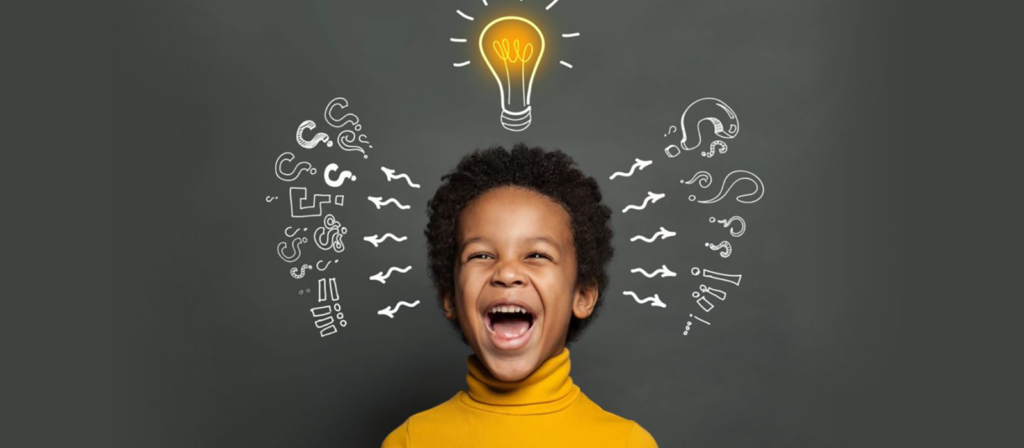
พัฒนาการด้านร่างกาย
การพัฒนาทางกายภาพรวมถึงทักษะการเคลื่อนไหวเล็ก ๆ น้อย ๆ (เช่น การวาดภาพ การเขียน) และทักษะการเคลื่อนไหวโดยรวม (เช่น การวิ่ง การกระโดด) ครูใช้เครื่องมือสังเกตเด็กปฐมวัยเพื่อติดตามความก้าวหน้าในด้านเหล่านี้ เพื่อช่วยให้ระบุได้ว่าเมื่อใดที่เด็กอาจต้องการการสนับสนุนเพิ่มเติม ตัวอย่างเช่น ครูอาจสังเกตการพัฒนาการประสานงานของเด็กเมื่อเด็กทำกิจกรรม เช่น การตัดด้วยกรรไกรหรือการขี่จักรยานสามล้อ

การพัฒนาสังคม
การพัฒนาทางสังคมเป็นประเด็นสำคัญที่ต้องให้ความสำคัญในการสังเกตการศึกษาปฐมวัย ครูจะสังเกตวิธีที่เด็กๆ โต้ตอบกับเพื่อนๆ เจรจาและแก้ไขข้อขัดแย้ง และแบ่งปันหรือผลัดกัน การติดตามปฏิสัมพันธ์ทางสังคมจะช่วยให้เข้าใจว่าเด็กที่มีสุขภาพแข็งแรงพัฒนาทักษะในการเข้ากับผู้อื่นและเข้าใจบรรทัดฐานทางสังคมได้อย่างไร

พัฒนาการทางอารมณ์
การพัฒนาทางอารมณ์เน้นไปที่วิธีการที่เด็กเข้าใจและจัดการอารมณ์ของตนเอง ผ่านการสังเกต ครูจะเห็นว่าเด็กตอบสนองต่อความหงุดหงิด ความสุข หรือความวิตกกังวลอย่างไร และรับมือกับอารมณ์เหล่านี้อย่างไร ตัวอย่างเช่น ครูอาจบันทึกความสามารถของเด็กในการสงบสติอารมณ์หลังจากอารมณ์เสียระหว่างกิจกรรมกลุ่ม ซึ่งเน้นถึงการควบคุมอารมณ์ที่เพิ่มมากขึ้นของเด็ก

การพัฒนาภาษาและการรู้หนังสือ
Language and literacy development are other areas tracked during early childhood observation. Teachers document the child’s ability to use language to express themselves, follow instructions, and engage in storytelling. Observations can reveal how a child develops vocabulary, syntax, and conversational skills over time.

รายงานการสังเกตเด็กประกอบด้วยอะไรบ้าง?
รายงานการสังเกตเด็กในวัยเด็กเป็นเอกสารที่ครอบคลุมซึ่งสรุปผลการค้นพบของครูผู้สอนจากการสังเกตเด็กในช่วงระยะเวลาที่กำหนด รายงานนี้มีบทบาทสำคัญในการบันทึกพัฒนาการของเด็ก และสามารถเป็นเครื่องมือที่มีค่าสำหรับครูผู้สอนและผู้ปกครอง รายงานการสังเกตเด็กที่จัดทำอย่างดีจะให้ข้อมูลเชิงลึกเกี่ยวกับโดเมนพัฒนาการต่างๆ และช่วยชี้นำการตัดสินใจในการสอน
1. ข้อมูลพื้นฐานของเด็ก
ส่วนแรกของรายงานการสังเกตเด็กประกอบด้วยข้อมูลสำคัญเกี่ยวกับเด็กที่ถูกสังเกต โดยทั่วไปประกอบด้วย:
- ชื่อเด็ก
- อายุหรือวันที่เกิด
- วันที่สังเกต: วันหรือกรอบเวลาที่แน่ชัดในระหว่างการสังเกตการณ์
- ห้องเรียนหรือสถานที่:สถานที่สังเกตการณ์ (เช่น ห้องเรียน สนามเด็กเล่น)
ข้อมูลพื้นฐานนี้ช่วยวางบริบทให้กับรายงานและรับรองว่าการสังเกตมีความเชื่อมโยงกับเด็กแต่ละคนและระยะพัฒนาการของพวกเขา
2. การตั้งค่าและบริบทของการสังเกต
ส่วนต่อไปนี้จะอธิบายถึงสภาพแวดล้อมที่สังเกตการณ์ โดยมีรายละเอียดเกี่ยวกับ:
- สิ่งแวดล้อมไม่ว่าการสังเกตจะเกิดขึ้นในห้องเรียน ในเวลาเล่น ระหว่างกิจกรรมกลุ่ม หรือในสภาพแวดล้อมที่มีโครงสร้างมากขึ้น
- บริบทของกิจกรรม:เกิดอะไรขึ้นระหว่างการสังเกต เช่น เด็กกำลังทำงานเฉพาะอย่าง เล่นกับเพื่อน หรือทำกิจกรรมการเรียนรู้ใหม่ๆ หรือไม่
บริบทนี้ช่วยชี้แจงพฤติกรรมของเด็กและปฏิสัมพันธ์กับสภาพแวดล้อมและกิจกรรมที่เด็กกำลังทำอยู่ได้อย่างชัดเจน นอกจากนี้ ยังช่วยให้เข้าใจว่าสภาพแวดล้อมอาจส่งผลต่อพฤติกรรมและพัฒนาการของเด็กได้อย่างไร
3. การสังเกตพฤติกรรมและพัฒนาการของเด็ก
The core of any childhood observation report is a detailed description of the child’s behavior during the observation period. This section focuses on specific actions, interactions, and responses that the child demonstrated:
- พัฒนาการทางปัญญา:เด็กแก้ปัญหา ประมวลผลข้อมูล หรือมีส่วนร่วมกับแนวคิดใหม่ๆ อย่างไร
- พัฒนาการด้านร่างกาย:การกระทำที่แสดงถึงทักษะการเคลื่อนไหว เช่น การวิ่ง การกระโดด หรือการเคลื่อนย้ายสิ่งของ
- การพัฒนาสังคม:การโต้ตอบกับเพื่อนและผู้ใหญ่ รวมถึงความร่วมมือ การแบ่งปัน และการแก้ไขข้อขัดแย้ง
- พัฒนาการด้านอารมณ์:การตอบสนองต่ออารมณ์ เช่น ความหงุดหงิด ความสุข หรือความวิตกกังวล และวิธีที่เด็กควบคุมอารมณ์ของตนเอง
การสังเกตแต่ละครั้งได้รับการบันทึกอย่างละเอียดถี่ถ้วน โดยจะบันทึกรายละเอียดพัฒนาการของเด็กแบบเรียลไทม์ ซึ่งรวมถึงช่วงเวลาดีๆ (เช่น เด็กทำภารกิจสำเร็จ) และความท้าทาย (เช่น การทำงานเป็นกลุ่มที่ยากลำบาก)

4. การวิเคราะห์และการตีความ
หลังจากบันทึกพฤติกรรมของเด็กแล้ว ครู... วิเคราะห์ การสังเกต ส่วนนี้ให้การตีความการกระทำของเด็กและความสัมพันธ์กับพัฒนาการของเด็ก การวิเคราะห์จะช่วยตอบคำถาม เช่น:
- การสังเกตเหล่านี้ชี้ให้เห็นถึงจุดแข็งและพื้นที่สำหรับการเจริญเติบโตของเด็กอย่างไร
- มีรูปแบบที่สังเกตเห็นได้ใด ๆ ในพฤติกรรมหรือพัฒนาการของเด็กหรือไม่?
- เด็กตอบสนองต่อความท้าทายหรือสถานการณ์ใหม่ๆ อย่างไร?
การวิเคราะห์นี้ช่วยในการทำความเข้าใจความก้าวหน้าของเด็กและทำหน้าที่เป็นแนวทางสำหรับกลยุทธ์และการแทรกแซงทางการศึกษาเพิ่มเติม
5. คำแนะนำสำหรับขั้นตอนต่อไป
ในที่สุด รายงานการสังเกตวัยเด็กจะรวมถึงคำแนะนำสำหรับการสนับสนุนการเจริญเติบโตและพัฒนาการอย่างต่อเนื่องของเด็ก ข้อเสนอแนะเหล่านี้ขึ้นอยู่กับการสังเกตและการวิเคราะห์ และอาจรวมถึง:
- กลยุทธ์ที่มุ่งเป้าหมาย:วิธีการสอนที่เฉพาะเจาะจงหรือการแทรกแซงเพื่อแก้ไขด้านต่างๆ ที่เด็กอาจต้องการการสนับสนุนเพิ่มเติม (เช่น การเสริมสร้างทักษะทางสังคมหรือพัฒนาการด้านกล้ามเนื้อมัดเล็ก)
- เป้าหมายการเรียนรู้:วัตถุประสงค์ในระยะสั้นหรือระยะยาวเพื่อชี้นำความก้าวหน้าของเด็กในด้านเฉพาะต่างๆ (เช่น การพัฒนาทักษะด้านภาษา การปรับปรุงพฤติกรรมการทำงานเป็นกลุ่ม)
- การสังเกตการณ์ในอนาคต:ระบุพื้นที่ใดๆ ที่ควรได้รับการติดตามอย่างใกล้ชิดมากขึ้นในการสังเกตการณ์ครั้งต่อไป เพื่อติดตามความคืบหน้าหรือความท้าทาย
These recommendations help teachers and parents align their efforts to create an environment that fosters the child’s development holistically and individually.

Receive a free catalog and custom layout to help you design your ideal classroom easily.
Considerations for Documenting
Effective childhood observation is only as valuable as the documentation that follows. When observations are recorded thoughtfully, they become powerful tools for reflection, communication, and action. Whether for planning lessons, discussing concerns with families, or identifying developmental patterns, high-quality documentation ensures the observation serves its true purpose.
Writing observations isn’t just about putting words on paper. It’s about choosing the right words—those that describe behavior accurately, respectfully, and usefully.
Objectivity
The most crucial rule in documenting is to remain objective. This means describing only what you see and hear, without making assumptions, judgments, or interpretations. Instead of writing, “Emma was angry and rude,” it’s more appropriate to say, “Emma crossed her arms, frowned, and said, ‘I don’t want to play with you.’”
Objectivity removes personal bias from the record and keeps the focus on behavior. This matters because colleagues, supervisors, or families may review observations. A subjective or emotional tone can damage trust and distort the child’s experience.
In emotionally charged situations, such as conflict, tantrums, or refusal to follow instructions, it’s essential to pause and reflect before writing. Ask yourself: Am I describing the behavior, or am I expressing my feelings about it? By maintaining objectivity, we ensure that documentation remains professional, credible, and helpful for decision-making.
Specificity and Directness
Generalized or vague statements don’t offer much value. For documentation to be meaningful, it must be specific. This means including details like what the child said or did, what materials they used, and the time or setting of the event.
For instance, instead of writing, “Liam was creative during art time,” a more specific and direct observation would be, “Liam chose yellow and red paint and used a sponge to create overlapping circles. He said, ‘This is the sun and this is the fire.’” This version gives a clearer picture of the child’s thought process and choices.
Direct language avoids unnecessary interpretation or overexplaining. Stick to simple, factual verbs like “said,” “reached,” “placed,” “smiled,” “ran,” or “cried.” These words are easy to understand and leave little room for misinterpretation.
Directness also saves time. In fast-paced classroom settings, efficient documentation is essential. Being both clear and concise allows teachers to capture more moments with less confusion.
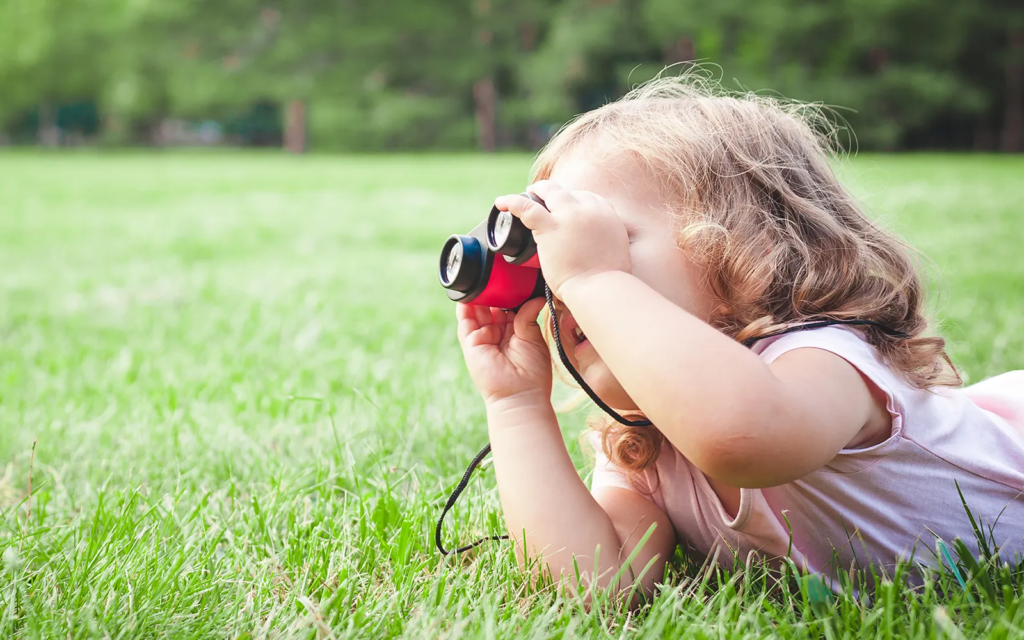
Mood and Emotional Tone
While objectivity is essential, that doesn’t mean we must ignore emotion altogether. Children express a wide range of emotions throughout the day, and noting these shifts, when done carefully, adds depth to the documentation.
The key is to focus on the observable signs of mood. For example, write “Ava looked down, her shoulders slumped, and she spoke softly when asked to clean up,” rather than “Ava was feeling sad.” The first version respects the child’s emotional state without guessing at causes or internal feelings.
It’s also essential to document positive emotional states, not just difficult ones. Noting joy, excitement, pride, or calmness helps paint a balanced, whole-child portrait over time. A record that only reflects problems misses opportunities to celebrate growth and strengths.
By acknowledging emotion in behaviorally grounded ways, we enrich our understanding of each child and how they respond to the world around them.
Completeness
An intense observation includes not only the behavior but also the context. Who else was present? What happened before and after? What materials were used? These details create a fuller picture and help educators identify patterns over time.
Let’s say a child throws a block across the room. If the documentation says, “Child threw a block,” it tells us very little. But if we write, “After another child took his block, Leo yelled, ‘That’s mine!’ and threw a block toward the shelf. He then crossed his arms and sat on the rug,” we begin to understand motivation, social dynamics, and emotional regulation.
Completeness also means following through—did the teacher respond? How did the child recover? Were there later reflections or apologies? Including this information helps connect the dots for future planning and helps avoid repeated incidents.

Receive a free catalog and custom layout to help you design your ideal classroom easily.
How to use childhood observations?
When we observe children, we gain access to a world that’s often missed in standardized testing and routine classroom interactions. But observation in itself isn’t enough. The real value of childhood observation comes when we apply what we see to real-life decisions in the classroom, at home, and in communication with families.
Create individualized lesson plans
Every child is unique. Some learn by touching, some by listening, and others by repeating actions until they master a skill. Through observation, teachers can begin to understand how each child learns best, not based on assumptions, but by watching how they interact with their environment, materials, and peers.
Let’s say a teacher notices that one child consistently chooses puzzles and works on them silently for long periods. Another child, in contrast, prefers movement-based activities and engages in lots of verbal interaction. Instead of offering the same lessons to both children, the teacher can use these observations to design personalized activities: hands-on logic challenges for the first child and group storytelling or dance-based learning for the second.
Observation also helps track interests over time. If a child shows sustained interest in animals, this might lead the teacher to integrate animal themes into reading, science, or art lessons. When lessons are rooted in genuine interest, engagement and learning deepen naturally.
This approach supports differentiated instruction and helps every child feel seen and supported. It also leads to more accurate assessments of progress, as children are evaluated within the context of their learning style and personal development journey.
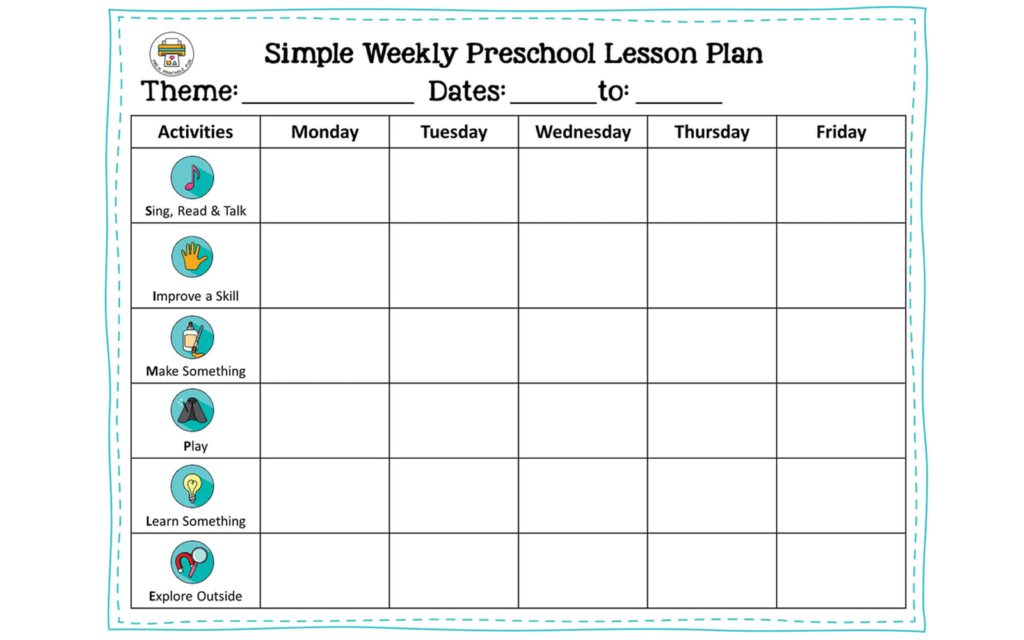
Enhance the classroom environment
Observing children can reveal whether a classroom setup truly supports learning or unintentionally blocks it. For example, a teacher might notice that children often avoid the reading corner or that group conflicts tend to arise in a specific area of the classroom. These patterns can highlight environmental issues such as poor layout, limited space, or lack of sensory variety.
By watching how children move through the space, what they gravitate toward, and where they struggle to focus or cooperate, educators can make informed adjustments. If a group of children frequently sits on the floor in a particular corner to read, it may be time to add cushions and turn that space into a quiet reading nook. If children are constantly pushing or arguing at a small table during art time, it might signal that more materials—or more room—are needed.
Changes based on observation don’t have to be expensive or dramatic. Sometimes, simply rotating toys, adjusting furniture placement, or adding visual cues can transform the energy of the room. Most importantly, these changes show children that their behaviors and needs are being noticed and respected, which supports a stronger sense of ownership and belonging.
Strengthen family-teacher communications
When educators share thoughtful observations with families, it builds trust and creates a partnership around the child’s development. Parents appreciate hearing more than just grades or behavior notes—they want to know how their child learns, how they interact with others, and how they handle challenges.
For example, instead of saying, “Your child is doing fine,” a teacher can say, “I’ve noticed that Maya has become more confident during group discussions. Last week, she volunteered to explain a math problem to her classmates.” This level of detail is only possible through consistent observation.
These shared insights also invite parents to share their observations from home. They may notice things that aren’t visible in the classroom, like how a child talks about school at the dinner table, or how they express emotions during playtime at home. This exchange builds a fuller picture of the child, which benefits everyone involved.
Moreover, when issues arise—such as behavior changes or learning difficulties—having a record of previous observations provides a valuable foundation for honest, constructive conversations. It helps avoid blame or confusion and keeps the focus on support and collaboration.
Identify developmental delays early
One of the most critical roles of observation is early detection. Development doesn’t happen on a fixed timeline, and while some variation is normal, unavoidable delays may require additional support. Through regular observation, teachers can notice if a child isn’t reaching expected milestones in language, motor skills, social interaction, or emotional regulation.
For instance, if a child rarely responds to their name, avoids eye contact, or doesn’t engage in pretend play beyond a certain age, these may be subtle signals of developmental concerns. These signs might be missed in group activities or short checklists, but through consistent, focused observation, they become more apparent.
Early identification doesn’t mean immediate labeling or judgment. It simply allows for timely discussion with specialists or families and the possibility of early intervention. The earlier a child receives support, the better the outcomes tend to be, both academically and emotionally.
Educators should document these patterns over time and across contexts, ensuring that any concerns are based on a complete picture of the child, not just a single moment or isolated behavior. When done with care and clarity, observation can help children access the support they need before problems become larger.

Receive a free catalog and custom layout to help you design your ideal classroom easily.
คำถามที่พบบ่อย
1. การสังเกตและการประเมินในช่วงวัยเด็กมีส่วนช่วยต่อพัฒนาการของเด็กอย่างไร?
การสังเกตและการประเมินช่วยให้ผู้สอนติดตามความก้าวหน้าของเด็กระบุความต้องการพัฒนาการ และสร้างแผนการเรียนรู้ส่วนบุคคลที่สนับสนุนการเติบโตของเด็ก
2. รายงานการสังเกตเด็กมีบทบาทอย่างไรในระบบการศึกษาปฐมวัย?
รายงานการสังเกตเด็กจะให้บันทึกที่ครอบคลุมเกี่ยวกับพฤติกรรมและความก้าวหน้าของเด็ก พร้อมทั้งให้ข้อมูลเชิงลึกเกี่ยวกับพัฒนาการของเด็ก และแนะนำกลยุทธ์ทางการศึกษา
3. รายงานการสังเกตเด็กสามารถนำมาใช้ระบุความล่าช้าด้านพัฒนาการได้หรือไม่
ใช่ รายงานการสังเกตเด็กสามารถเน้นย้ำถึงพื้นที่ที่เด็กอาจต้องการการสนับสนุนเพิ่มเติม ช่วยให้สามารถเข้าแทรกแซงได้ตั้งแต่เนิ่นๆ สำหรับความล่าช้าด้านพัฒนาการ
4. ผู้ปกครองสามารถใช้รายงานการสังเกตเด็กเพื่อสนับสนุนการเรียนรู้ของบุตรหลานได้อย่างไร?
ผู้ปกครองสามารถใช้รายงานการสังเกตเด็กเพื่อทำความเข้าใจจุดแข็งและจุดที่ต้องปรับปรุงของบุตรหลาน ช่วยเสริมสร้างการเรียนรู้ที่บ้านและทำงานร่วมกับครู
บทสรุป
การสังเกตเด็กเป็นเครื่องมือสำคัญในการศึกษาปฐมวัย ช่วยให้ครูได้รับข้อมูลเชิงลึกที่จำเป็นในการประเมินและสนับสนุนการพัฒนาการเฉพาะตัวของเด็กแต่ละคน ผ่านการสังเกตเด็กปฐมวัยอย่างเป็นระบบ ครูจะติดตามการเติบโตทางปัญญา ร่างกาย อารมณ์ และสังคมของเด็ก โดยใช้การสังเกตเหล่านี้เพื่อแจ้งแนวทางการสอนและระบุพื้นที่สำหรับการสนับสนุนเพิ่มเติม
รายงานการสังเกตเด็กในวัยเด็กเป็นเอกสารที่ครอบคลุมซึ่งรวมข้อมูลพื้นฐานของเด็ก คำอธิบายเกี่ยวกับสภาพแวดล้อม การสังเกตพฤติกรรมและพัฒนาการของเด็กโดยละเอียด การวิเคราะห์ความก้าวหน้าของเด็ก และคำแนะนำที่ปฏิบัติได้สำหรับขั้นตอนต่อไป รายงานนี้ให้ภาพรวมว่าเด็กอยู่ในขั้นตอนใดของการพัฒนา และช่วยสร้างแผนงานสำหรับการเติบโตอย่างต่อเนื่องของเด็ก ทั้งในห้องเรียนและที่บ้าน
นักการศึกษาสามารถตัดสินใจอย่างรอบรู้เกี่ยวกับการวางแผนบทเรียน การแทรกแซงเด็ก และการสื่อสารกับผู้ปกครองได้โดยการบูรณาการการสังเกตและการประเมินในการศึกษาปฐมวัย รายงานเหล่านี้ส่งเสริมแนวทางการทำงานร่วมกัน เพื่อให้แน่ใจว่าวิธีการสอนเป็นแบบเฉพาะบุคคลและตอบสนองต่อความต้องการของเด็กแต่ละคน ส่งผลให้สภาพแวดล้อมการเรียนรู้ที่สนับสนุนและมีประสิทธิภาพมากขึ้นในที่สุด
เด็กรายงานการสังเกตพัฒนาการเป็นสิ่งสำคัญสำหรับการติดตามความคืบหน้า การระบุความล่าช้าด้านพัฒนาการ และปรับปรุงประสบการณ์ทางการศึกษา ซึ่งทำให้เป็นรากฐานสำคัญของการศึกษาปฐมวัยที่มีคุณภาพ



